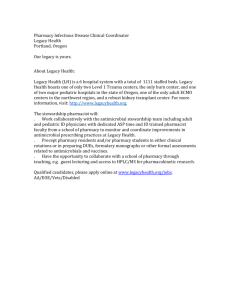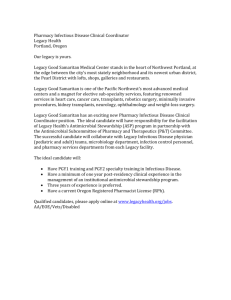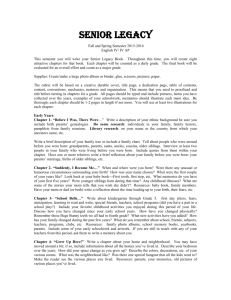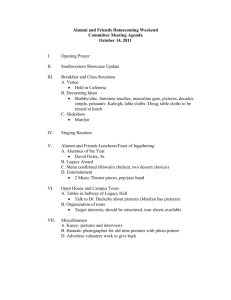Mitigate the Risk of Core Conversion
advertisement
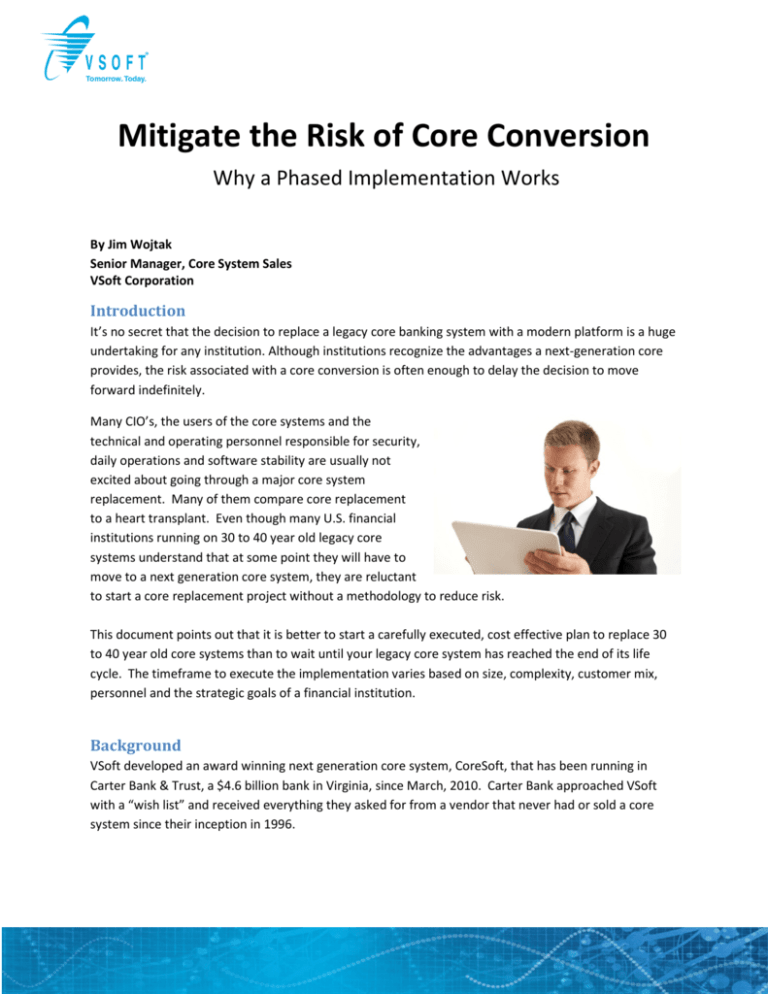
Mitigate the Risk of Core Conversion Why a Phased Implementation Works By Jim Wojtak Senior Manager, Core System Sales VSoft Corporation Introduction It’s no secret that the decision to replace a legacy core banking system with a modern platform is a huge undertaking for any institution. Although institutions recognize the advantages a next-generation core provides, the risk associated with a core conversion is often enough to delay the decision to move forward indefinitely. Many CIO’s, the users of the core systems and the technical and operating personnel responsible for security, daily operations and software stability are usually not excited about going through a major core system replacement. Many of them compare core replacement to a heart transplant. Even though many U.S. financial institutions running on 30 to 40 year old legacy core systems understand that at some point they will have to move to a next generation core system, they are reluctant to start a core replacement project without a methodology to reduce risk. This document points out that it is better to start a carefully executed, cost effective plan to replace 30 to 40 year old core systems than to wait until your legacy core system has reached the end of its life cycle. The timeframe to execute the implementation varies based on size, complexity, customer mix, personnel and the strategic goals of a financial institution. Background VSoft developed an award winning next generation core system, CoreSoft, that has been running in Carter Bank & Trust, a $4.6 billion bank in Virginia, since March, 2010. Carter Bank approached VSoft with a “wish list” and received everything they asked for from a vendor that never had or sold a core system since their inception in 1996. Mitigate the Risk of Core Conversion | Why a Phased Implementation Works When he decided to replace his 40 year old legacy core system (NCR CIF), Carter Bank’s Chairman and CEO, Worth Harris Carter said, “The real risk for his bank would have been settling for one of the solutions already on the market.” Taking a “go-slow” approach to deployment, going live one module at a time and sometimes even one product at a time over a four year period, the risk associated with their conversion to next generation was lowered substantially. Now that this successful methodology has been documented, VSoft is prepared to offer CoreSoft to other financial institutions that are thinking about core replacement but haven’t started looking at alternatives because of the risk of a core system conversion. Mitigating Risk A phased approach to core conversion is the best way to minimize risk and disruption of daily activities at the financial institution. Below are a few of the methods VSoft documented to mitigate risk of implementing CoreSoft, VSoft’s next generation core system: Module Implementation: Proof of Concept through an implementation that is phased in a module at a time is a way to mitigate risk because it eliminates the need for a “Big-Bang” conversion. For example, financial institutions can start the core replacement project by installing the Deposit module first. Because of VSoft’s next generation design, CIF is automatically installed to ensure customer relationships are maintained during the installation of the Deposit module. Making sure CIF is “cleaned up” before conversion is important but that is a subject that will be composed and highlighted in a future newsletter. A Gap Analysis and careful mapping followed by parallel testing over a period of time will ensure the Deposit module is ready for conversion. As stated previously, the period of time will vary depending on the institution, but will most likely be over a minimum of twelve (12) months to three (3) years. During the testing period, an option exists to have VSoft personnel executing the daily operation of CoreSoft in parallel mode. While the institution would still be required to assign a project manager for the implementation, this method will enable the institution to perform its daily responsibilities within each department with little interruption. In order to ensure it is safe to “go live” on CoreSoft, parallel testing will include daily, monthly, quarterly and year-end testing. Product at a Time Implementation: Implementation of a module such as Deposits but phasing in one product at a time is another method. This method may take longer than implementation of an all product conversion for a single module but it will ensure a safer option than going with all products at the same time. A product at a time project implementation will take a minimum of two (2) years and up to five (5) years before all products are moved to the new system. A good way of doing this could be rolling out a new Deposit product to a financial institution’s customer base. This process will include updates to CIF and General Ledger of the existing Mitigate the Risk of Core Conversion | Why a Phased Implementation Works legacy system. The other product at a time option would be to convert and test existing products one at a time in parallel mode. During the testing period, an option exists to have VSoft personnel execute the daily operation of CoreSoft in parallel mode. While the institution would still be required to assign a project manager for the implementation, this method will enable the financial institution to perform its daily responsibilities within each department without much interruption. Model Bank Implementation: Model Banks are typically designed to enable financial institutions to make significant changes to its operation before fully implementing the changes. This option mitigates risk and at the same time enables a financial institution to manage change associated with moving from a legacy core system to a next generation core system. The Model Bank implementation can be handled a couple different ways: • • A Model Bank can be set up by mapping a select number of customers for each product offered by a financial institution and converting them from the existing legacy core system to a Model Bank using a carefully planned course of action to stream line existing operations. Another option would be to set up the Model Bank manually by moving only new customers to the Model Bank and integrating appropriate transactions from the Model Bank to CIF and General Ledger. This can also be done a module at a time or all modules with limited number of customers. Once the Model Bank is certified as sound, a time table can be established for conversion. This Model Bank implementation will also vary from an installation time standpoint but could range from two (2) years to four (4) years. A Word of Caution VSoft has heard from a number of financial institutions of all sizes that their legacy system can no longer support their respective goals and objectives to reduce cost, retain existing customers and attract new ones. Some legacy core vendors have promised modernization of their 40 year old core systems and many financial institutions have been approached by offshore core vendors that are attempting to penetrate the U.S. market. Established Domestic Legacy Core Vendors: The established domestic legacy core vendors that have modernized their core systems or have promised modernization are sincere in their efforts. However, much of the legacy code and certainly the original design remain the same. This means the overhead associated with a legacy core system remains the same. This equates into continued high cost of ownership. Real time is also an issue because, while many financial institutions aren’t ready for real time processing, most realize they have to move from batch (memo post) to real time in order to compete in the 7x24x365 world we live in today. Mitigate the Risk of Core Conversion | Why a Phased Implementation Works Offshore Core System Vendors: Most of the core systems developed by the offshore vendors are Real Time. However, unless a financial institution is prepared to immediately move from batch to real time, core replacement with an offshore vendor is probably not going to work. CoreSoft’s next generation design enables a financial institution to start in batch mode and then migrate to real time when it is ready to do so. The other issue is that few of the offshore core vendors have completely localized their features and function to U.S. standards. This means there will be significant feature/function gaps and more importantly, these systems will not be U.S. regulatory compliant. Final Thought While it is true that the risk associated with core replacement cannot be eliminated, risk reduction through a “phased-in”, parallel tested implementation approach is possible. VSoft’s initial strategy is to target those financial institutions that are looking to replace their core engine only. Therefore, VSoft’s next CoreSoft clients will be those that prefer to use “Best-of-Breed” ancillary systems. CoreSoft’s next generation design ensures that easy integration of third party systems and SSO (Single-Sign-On) is inherent within a risk mitigated conversion to CoreSoft. This is also a subject that will be covered in future newsletters.



